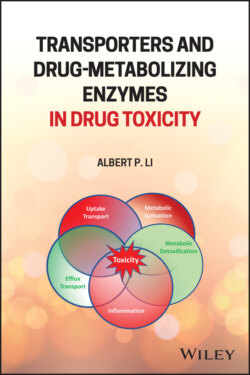Читать книгу Transporters and Drug-Metabolizing Enzymes in Drug Toxicity - Albert P. Li - Страница 59
3.4.1 Drug Metabolism and Toxicity
ОглавлениеAssociation of felbamate administration and aplastic anemia was the key reason for the initial market withdrawal of felbamate [72]. Upon its redemption, felbamate was also known to be associated with idiosyncratic acute liver failures [73].
The mechanism for felbamate toxicity is not yet fully defined. While aplastic anemia was the initial reason for the market withdrawal of felbamate, most research activities were focused on its hepatotoxicity. Felbamate has been reported to be subjected to P450‐mediated oxidation, with CYP3A4 and CYP2E1 identified to be the major isoforms involved in its metabolism [74], an observation that was made in vitro but was not confirmed in clinical studies with CYP3A4 inhibitors [75]. The reported reactive metabolites generated upon hepatic metabolism include alpha, beta‐unsaturated aldehyde, atropaldehyde (ATPAL) [76, 77], and 2‐phenylpropenal (a metabolite formed by hydrolysis of felbamate to 2‐phenyl‐1,3‐propandiol monocarbamate [MCF], followed by oxidation to 3‐carbamoyl‐2‐phenylpropionaldehyde [CBMA], and spontaneous loss of carbon dioxide and ammonia) [78–80]. An ongoing hypothesis is the oxidative stress and conjugation of macromolecules by reactive metabolites of felbamate, leading to the onset of a cascade of events which ultimately result in acute liver failure [81]. It is interesting to note that felbamate is an inhibitor of CYP2C19 [75] and a heteroactivator (not inducer) of CYP3A4 [74].
